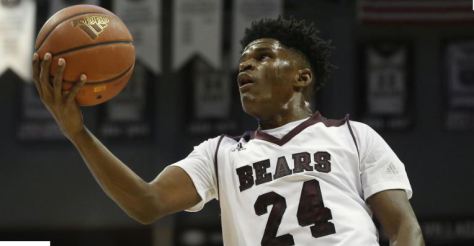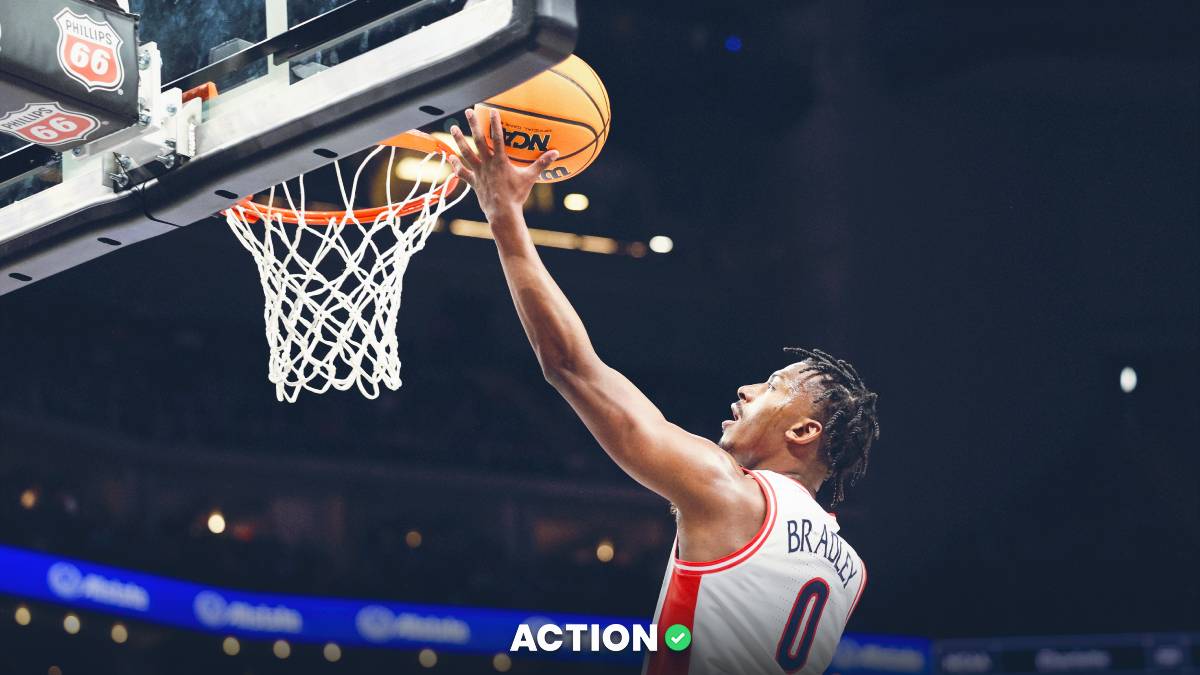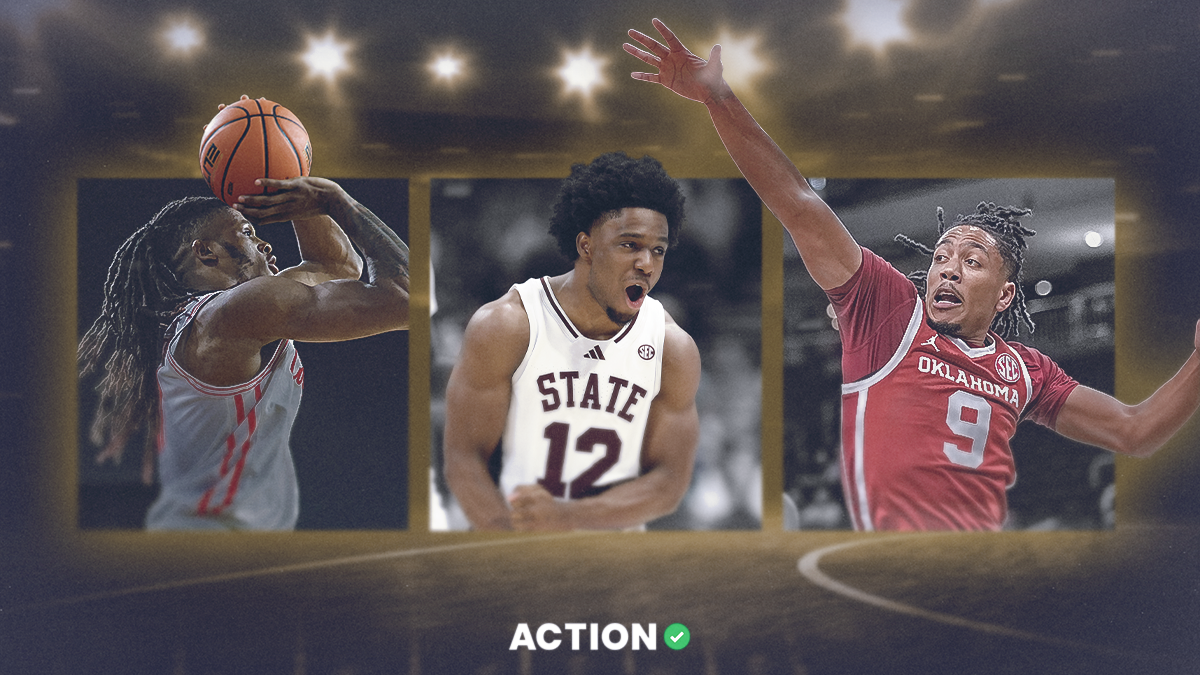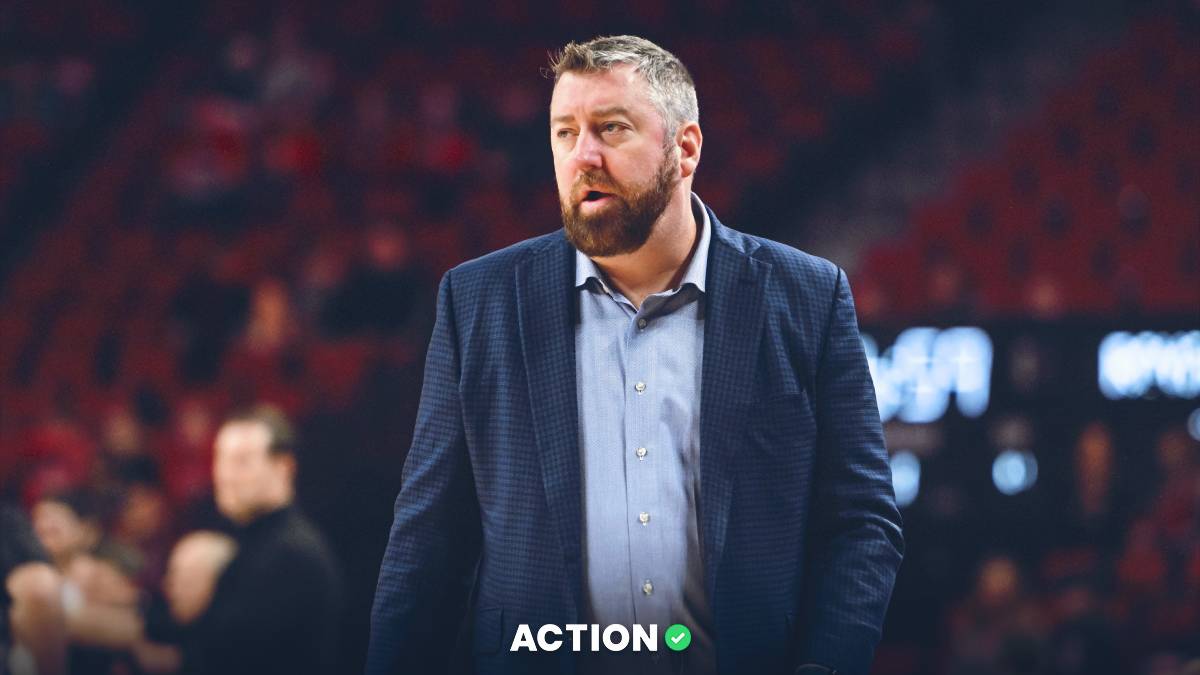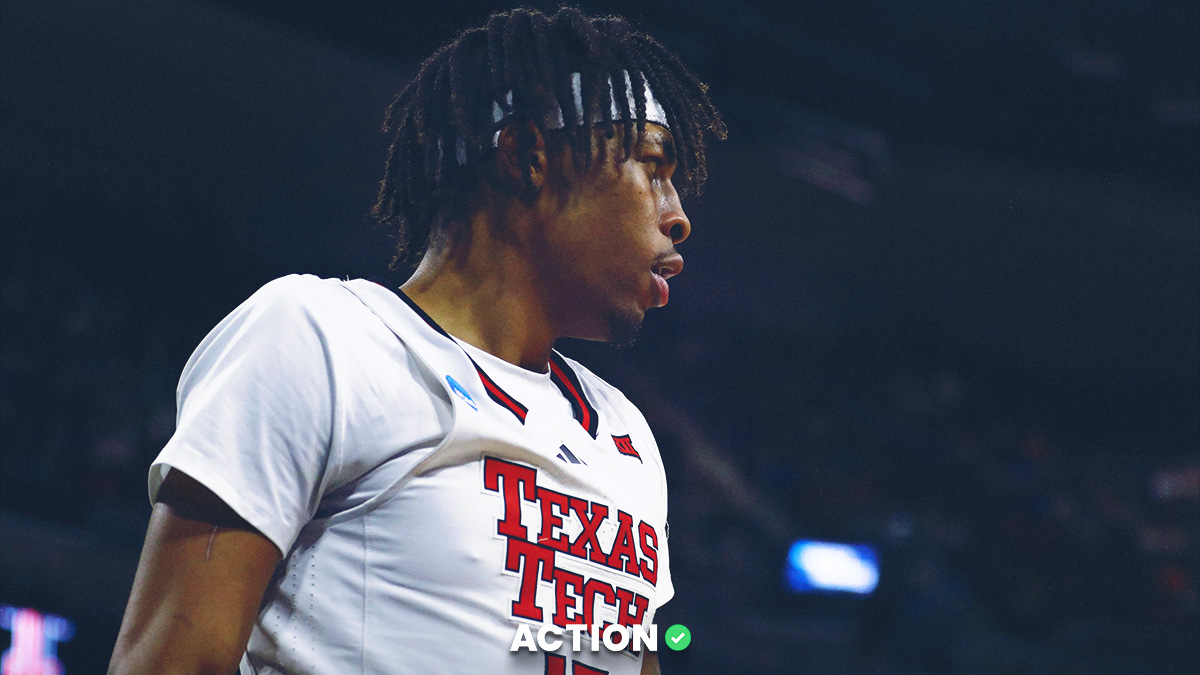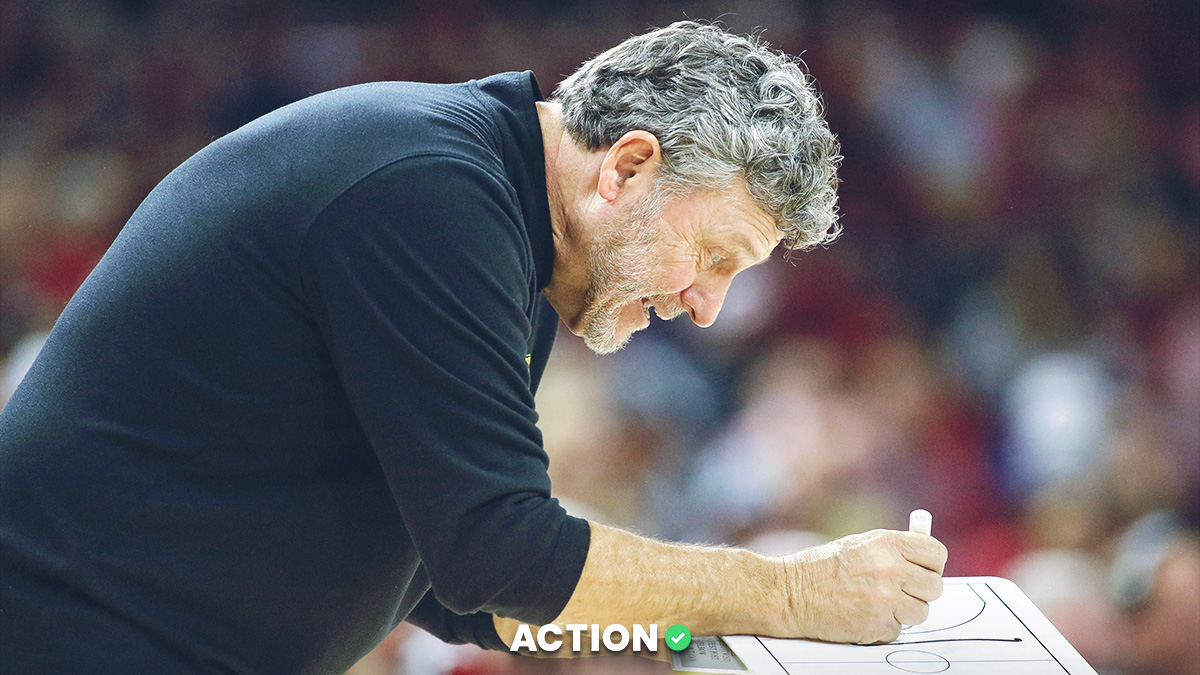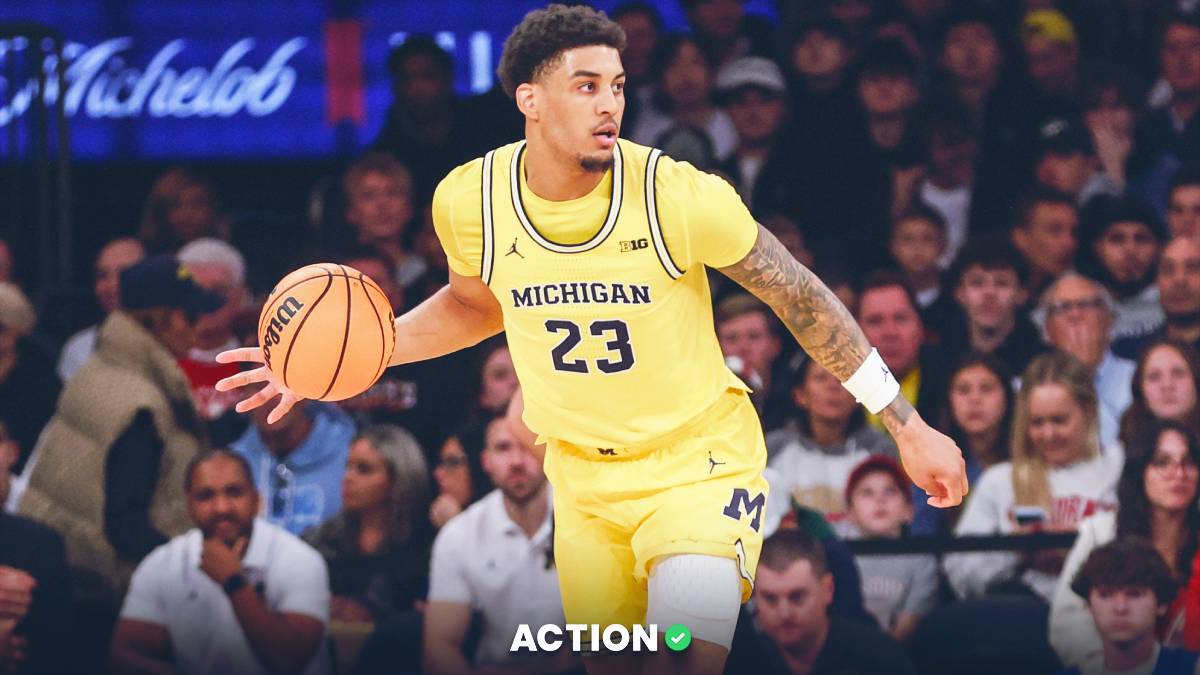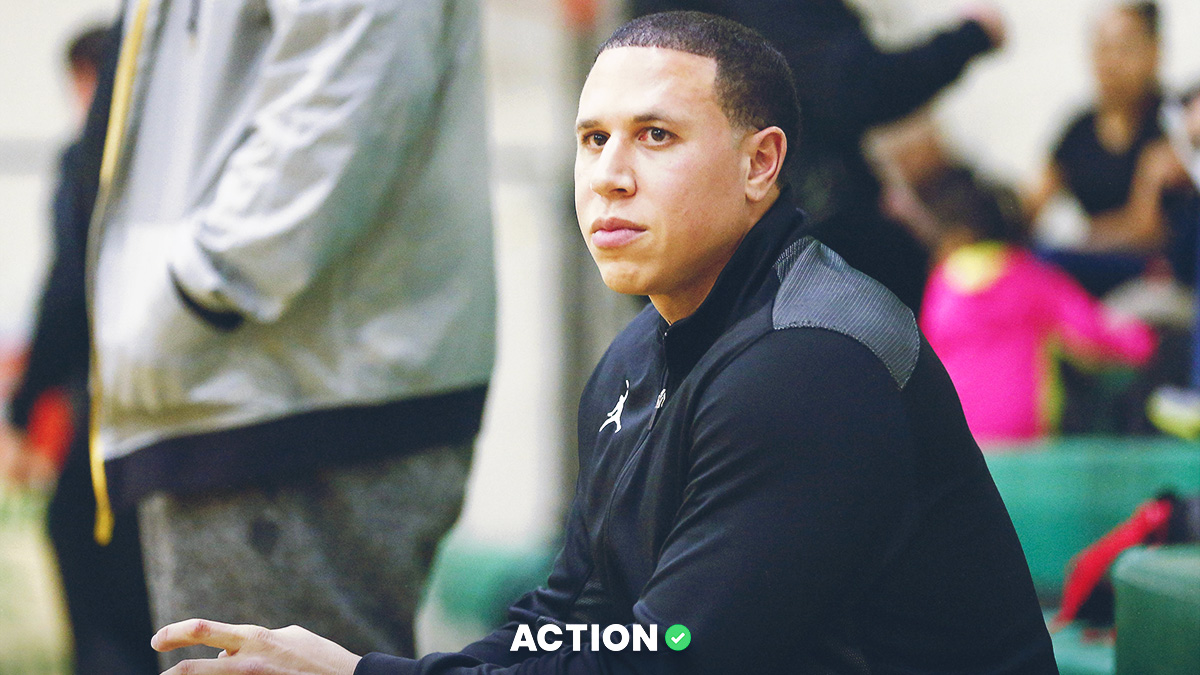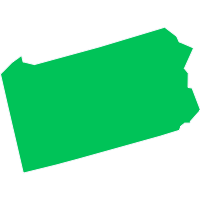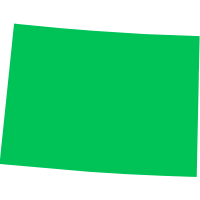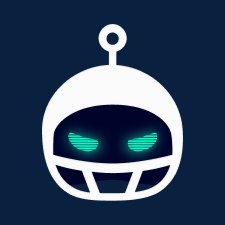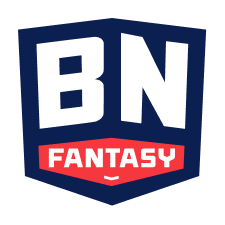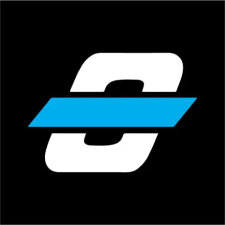1. With Wichita State leaving for the AAC, the king has abdicated the throne in the Valley, and the league's overall profile is going to take a dramatic hit.
2. Valparaiso enters the league, and while they're not on the same tier as Wichita State, they're a great fit in the Valley and the best program the league could have hoped for in this situation.
3. With the Shockers gone and Illinois State rebuilding, the Valley race is going to be wide open for the first time in nearly 10 years.
4. One new coach enters the league (besides Matt Lottich and Valpo), and that's Niko Medved, who takes over at Drake. The Bulldogs haven't had a winning season in the Valley since the magical 2007-08 campaign when they were led by Keno Davis. Medved built a down and out Furman program into a SoCon contender, but he'll need some time in Des Moines.
5. Several coaches begin the year with a warm seat: Barry Hinson at SIU, Greg Lansing at Indiana State, Marty Simmons at Evansville and Paul Lusk at Missouri State. Expectations are extremely high in Springfield this year, so Lusk is in arguably the most perilous situation.
PREDICTED ORDER OF FINISH:
1. Missouri State– The Bears have a loaded roster, and it all begins with Alize Johnson, a 6-foot-9 versatile 4 with an NBA-ready game. Johnson was dominant in his first year out of the JUCO ranks, leading the MVC in defensive rebounding rate (eighth nationally) and posting the second-highest offensive rebounding percentage as well. He drew contact at the sixth-highest rate in the league and shot 40 percent from 3 while also showing a solid passing and ball handling skill set. He's clearly the frontrunner for MVC POY and is a matchup nightmare in this league. If an opposing coach wants to limit his speed and put a quicker 3 on him, he'll simply abuse them in the paint, and there isn't another 4 in the league that can guard him on the perimeter. He'll be aided by the return of Ronnie Rousseau to the point, as Paul Lusk welcomed him back after he left the team for personal reasons. Rousseau was clearly a difference maker, as the Bears won only six games after his departure, and his presence should lower the league's eighth-highest turnover rate. His return also pushes Jarred Dixon back to a more comfortable position off the ball as a 6-foot-4 slasher and one of Lusk's better perimeter defenders. Ryan Kreklow returns as a sharpshooter off the bench, and Howard transfer J.T. Miller can score in a variety of ways out of the backcourt and could start off the ball. 6-foot-6 redshirt freshman Boogie Williams is something of an unknown at this point for the Bears. He's the highest-rated recruit Lusk has had in Springfield and has a Shaun Livingston-type game, but he's been sidelined with an array of serious medical issues, and I have no idea if he'll be able to contribute at any point this year. 6-foot-6 Jarrid Rhodes can hit shots on the wing as well. The frontcourt around Johnson is led by Obi Church, an athletic rim protector who logged the league's second-highest block rate and forms the Valley's best rebounding team with Johnson. Reggie Scurry is another big JUCO score for Lusk, and he's another athletic 6-foot-5 glass eater. Neither Church nor Scurry scores with his back to the basket, and the Bears had the nation's fifth-highest two-point jump shot attempt rate. That's usually an indicator of an inefficient offense and is certainly an area a team with the athleticism of the Bears can improve upon. The frontcourt defense is bolstered even further by the addition of 7-foot-2 New Mexico State transfer Tanveer Bhullar and 6-foot-7 JUCO Abdul-Hakim Fofana. Bhullar isn't going to log a lot of minutes, but his mountain-like presence in the paint alters a lot of what an offense wants to do, and the Bears were already the fifth-best defense in the country in terms of limiting shot attempts at the rim. Fofana, meanwhile, is arguably the team's most athletic player and should be Lusk's best defender at the 3/4. The Bears are deep in the backcourt and frontcourt, but there are a few things holding me back from going "all in" on MSU. For one, the defense on the perimeter and wing doesn't necessarily look to be improving, and it was a major issue last year. Two, Lusk's situational coaching can be interesting, to put it mildly, and while I would love to see the Bears utilize their depth and athleticism to significantly speed up the tempo, I'm not sure it's in Lusk's coaching DNA, especially in a traditional grinder league like the Valley.
2. Northern Iowa– There's a good chance UNI could end up being the best team in the Valley, but there a few aspects that had to be addressed in the offseason and need to come to fruition on the court for that to happen. 1) Bennett Koch has to reduce his foul rate and learn how to sense the double team and pass out of it efficiently. If he can stay on the floor and reduce his turnover rate, he'll have a monster year in the paint. 2) Someone, ANYONE has to become a consistent jump shooter. Last year's UNI team was by far the worst offensive team Ben Jacobson has put on the court in his 11-year tenure. The Panthers finished below 1.00 points per possession for the first time in his career, and UNI bottomed out with 0.93 ppp in MVC play, which was by far the lowest mark in the league – even worse than Bradley. Jacobson generally runs a four-out offense, and thus his teams are annually one of the country's leaders in 3-point attempt rate, and usually they hit them at a plus rate. Last year was an unmitigated disaster, however, as the Panthers shot just 30 percent from 3 in league play. Jacobson's one reliable shooter graduated, and he needs some shooters in the worst way this year. 3) Klint Carlson has to step up and be something of a Seth Tuttle. He can play the "point forward" role that Jacobson has coveted in the past, but he needs to be more assertive offensively. He's an excellent passer out of the high post, but the rest of his offensive game was lacking. Jacobson's backcourt should be comprised of Juwan McCloud on the ball with Spencer Haldeman and Wyatt Lohaus off the ball. McCloud has some Wes Washpun in him with his penetrate and kick ability, and his quick hands make him a natural on-ball defender on the perimeter, but he has absolutely no jump shot. It was often 4 on 5 last year when he ran the point to move Jeremy Morgan off the ball, and defenses would simply sag off and collapse on his penetration. Lohaus could be in for something of a breakout year after playing in only five games last season. He should bring much-needed perimeter shooting to the floor. Haldeman is a plus defender and a capable shooter, while Hunter Rhodes proved to be a capable ball handler with a good stroke in limited minutes last year. The wing corps gets a boost with Adam McDermott eligible out of North Dakota. McDermott is a pure shooter, exactly what Jacobson needs. 6-foot-5 Isaiah Brown has athleticism at the 2/3 but really struggled offensively in his debut season. Two freshmen could contribute immediately for Jacobson, as Austin Phyfe can help a woeful rebounding team on the glass, and Thywhon Pickford is a volume scorer with elite athleticism as a combo guard; as I mentioned earlier, this team needs offensive firepower. He was a Michigan State target before a torn meniscus. The defense last year was typical of a Jacobson squad, holding opponents to sub-1.00 points per possession and forcing them into contested jump shots, a hallmark of Jacobson's packed in defensive units. The problem was that they didn't rebound the misses at a typical UNI rate – and of course the woeful offense. It's hard to imagine a Jacobson team sputtering like they did on the offensive end for two years in a row, and it should be noted the Panthers finished 9-9 in the league with the Valley's lowest offensive efficiency. The previous best record in the Valley for a team posting the conference's lowest points per possession was 7-11, by Bradley several seasons ago.
3. Loyola Chicago– Porter Moser's Ramblers have been knocking on the door of breaking through to a winning MVC record for a few years now, and this should be the season they finally pull it off – which is odd considering they lose do-everything guard Milton Doyle. Even without Doyle, Moser has a veteran backcourt and three impact newcomers in the frontcourt. At this point in Loyola's short MVC tenure, Moser has developed something of a brand on both ends of the floor in terms of style and scheme. Offensively, the Ramblers rely on sharpshooters on the perimeter in penetrate and kick/pick-and-roll heavy sets. Two of his his last three offenses have finished as top-25 3-point percentage teams. Defensively, Moser really likes to extend pressure with his guards (10th and 37th nationally in turnover rate the last two seasons) and deny transition opportunities at all costs. This is essentially how his Illinois State teams played in his first go round in the Valley. Clayton Custer and Ben Richardson in the backcourt are two of Moser's best shooters, with both hitting above 40 percent from deep last year. Custer will be the primary ball handler this year, and Richardson is the spot shooter and better defender in extended pressure situations. The addition of Marques Townes from Fairleigh Dickinson is a big one. At 6-foot-4, he has a similar skill set to Doyle and can run the point as well. On the wing, Donte Ingram returns as one of the most efficient players in the entire league. Ingram hit at an absurd 48 percent from 3-point range in MVC play and posted the fifth-highest rebounding rate in the conference. He can play the 4 and take bigger guys out to the perimeter or post up smaller 3s. In the frontcourt, Aundre Jackson is a hyperly efficient but undersized 4/5. Jackson shot 67 percent from the field but also showed a more than solid 3-point shot. With the addition of Carson Shanks, a 7-footer from North Dakota, Jackson should be able to expand his game to the wing a lot more often. Shanks is a serviceable rim protector and rebounder and is also useful in pick and pop situations. The frontcourt is also bolstered by the addition of Moser's two best freshmen recruits since arriving in Chicago – Christian Negron and Cameron Krutwig. Krutwig can serve as a point forward out of the high post for Moser, while Negron can do everything on the floor at 6-foot-7. He'll be eased into action after a knee injury cost him his senior season of prep ball. Moser certainly addressed the frontcourt issues and the loss of Doyle in the offseason, and the Ramblers are a definite title contender with Wichita State out of the picture.
4. Illinois State– Dan Muller and the Redbirds are coming off a 17-1 MVC season and a trip to the NIT, but a rebuilding year in Normal would certainly be understandable given the amount of talent ISU lost in the offseason. The losses are equally heavy in the frontcourt and backcourt, as Phil Fayne is the only returning starter from last year's historic team. The hits kept coming for Muller in the offseason, as key JUCO transfer Zach Copeland was ruled ineligible and junior Keyshawn Evans required shoulder surgery. A healthy Evans will be relied upon offensively in the backcourt after hitting 43 percent of his 3-pointers in Valley play and finishing the year on an upswing. Evans will likely run the point early but could increasingly slide off the ball where he's more effective if sophomore Madison Williams continues to develop and Texas Southern transfer Jerron Martin can provide meaningful minutes. Williams is more in line with the long, athletic perimeter players Muller prefers in his aggressive hybrid man/matchup zone defense that played at an elite level last year. Off the ball, Muller will be relying on 6-foot-6 Boogie Tinsley to have an immediate impact as a scorer, but again, his minutes will be tethered to how quickly he picks up Muller's defense. 6-foot-4 freshman Elijah Clarance will be a factor on and off the ball as soon as he's back from having his knee scoped. Muller's biggest offseason addition is former Saint Louis University 3/4 Milik Yarbrough. Yarbrough is a prototypical Muller wing, as he can exploit mismatches against smaller 3s and use his athleticism on the perimeter against bigger 4s. Offensively, most action will funnel through Yarbrough, as he's a skilled passer as well. The frontcourt should be a strength, especially defensively, with Fayne and David Ndiaye returning. Fayne posted the Valley's best offensive rebounding rate and was an underrated offensive threat. With MiKyle McIntosh and Deontae Hawkins gone, he'll have to be able to shoulder a much greater share of the paint production. Ndiaye's offensive skill set is still a work in progress, but he's an elite rim protector who should post the Valley's highest block rate with more minutes. UTEP transfer Christian Romine should provide some frontcourt depth. In the KenPom era, only four defenses have held Valley opponents under 0.90 points per possession for an entire season: 2009-10 UNI, Wichita State 2014-16 and Illinois State last year. This ISU team won't reach that level of greatness, but with Muller restocking on long, rangy athletes, they should be among the Valley's best again. Offensively, a lot really depends on Yarbrough. If he's as good as Muller has advertised in the offseason, I probably have the Redbirds way too low.
5. Southern Illinois– Barry Hinson's Salukis might undergo the most dramatic shift in fundamental scheme in the Valley this year. Since Hinson came to Carbondale in the 2012-13 season, his Saluki teams have almost completely eschewed the long ball in favor of a series of rim-attacking guards. It was painfully easy to gameplan for the Salukis – simply pack in the paint and sag off the perimeter and make them take jump shots or drive into a brick wall. This year, Hinson specifically recruited to become a more lethal perimeter team, and he has a healthy, bulked up Tyler Smithpeters back. Smithpeters is a 40-plus percent 3-point shooter when healthy, and he'll be joined this year by SLU transfer Marcus Bartley, who should be one of the tougher matchups for opposing Valley coaches as a 6-foot-4 point guard who can shoot and penetrate. JUCO Eric McGill figures to start immediately off the ball, and he's probably Hinson's best pure scorer. Armon Fletcher is back on the wing and should be much more healthy after playing through a foot injury. He's a plus defender and penetrator with a streaky jump shot when healthy. Sean Lloyd also returns as a versatile 3/4, particularly on the defensive end. Defensively, the Salukis should be one of the Valley's best. They posted the MVC's highest turnover rate at 20.6 percent, and that should continue with Lloyd and Fletcher back. In the frontcourt, Thik Bol is the league's rim protector, and Hinson added 6-foot-10 Kavion Pippen, giving the Salukis the best length/athleticism combo on the frontline in the Valley. With arguably the league's best defense, Hinson really need to focus on the offensive end, particularly finding some jump shooters, and I think he did that with Bartley and McGill. SIU should finally be a contender in the Valley again.
6. Indiana State– Greg Lansing is arguably top two among the league's best X's and O's coaches, surpassed only by Ben Jacobson. What Lansing doesn't have anymore is the full support of the AD, as he's essentially a lame duck coach on a one-year contract, and he has the league's worst facilities to work with. That said, he could have a dark horse on his hands with this year's Sycamores. Last year, the Trees suffered some unfortunate luck in close games, and a few different bounces of the ball could have meant the "gentleman's agreement" he had with the AD in terms of a rollover contract would have been renewed. This year, Lansing returns Brenton Scott, one of the league's best pure scorers out of the backcourt. He can play on and off the ball, hit the 3, and beat you off the bounce. Lansing will need sophomore Jordan Barnes to continue to develop as a ball handler so that Scott can slide off more often and not face the constant hard hedges he saw last year. Scott's also a harassing perimeter defender in Lansing's constantly switching hybrid matchup zone defense that has been known to fluster many Valley offenses (see Evansville's high motion sets). Again, Barnes needs to step up his game in this aspect, as graduating Everett Clemons was outstanding alongside Scott in that pestering matchup zone. 6-foot-2 freshman Tyreke Key should be an immediate contributor in the backcourt as a volume scoring combo guard out of Tennessee. On the wing, Lansing has two interesting additions in Qiydar Davis, a Louisiana Tech transfer who has had three separate knee injuries that have derailed his career, and freshman Clayton Hughes, a three-star recruit out of Tennessee. Davis has the athleticism to be an impact player, especially in Lansing's defense, but he has to stay healthy, of course. Hughes might be a year away from being a major force in the Valley, but he's a three-level scorer with explosive athleticism on the wing. The biggest key for a top half Indiana State finish might be Devin Thomas. The 6-foot-8 JUCO transfer did it all in his last stop, and Lansing's 4s (Matt Van Scyoc and Niels Bunschoten) were routinely abused on the defensive end. Thomas is a major upgrade in that regard. In the frontcourt, Emondre Rickman and Brandon Murphy are both big bodied and solid in rim protection and rebounding but offer very little offensively outside of putbacks. However, early reports out of practice (full disclosure, I'm a Terre Haute native with a fairly good feel for the state of the program) are that Murphy has slimmed down and refocused on basketball, and Rickman looks like a different player around the rim. Additionally, 6-foot-8 Bronson Kessinger is a bit of an x-factor if his gruesome leg injury from two years ago is fully behind him. If Lansing can rely on consistent offense in the paint, something he rarely has, this is a top-half Valley team.
7. Bradley– The Braves are a team I'm potentially sleeping on, as they'll be the most experienced squad in the Valley, and this could finally be the payoff for a tortuous rebuild since Brian Wardle took over. All five starters return from a team that was the third youngest in the country last year, and Wardle has five juniors who have been with him from the beginning of his tenure in Peoria. The Braves ended last season on a high note, winning their final three regular season games and then knocking off Drake on play-in Thursday in St. Louis. The main issue in Wardle's two seasons at Bradley since coming over from Green Bay has been on the offensive end, where they've been among the most inefficient teams in the entire country, mostly thanks to an inability to score from anywhere but the free throw line and habitually turning the ball over. In Wardle's first season in Peoria, the Braves had the highest turnover rate in the country, and they only improved to 334th last season. The Braves did improve dramatically in terms of their 3-point shooting last season, but they still couldn't generate any offense in the paint. Defensively the Braves looked more and more like a typical Wardle Green Bay team – aggressive on the perimeter with more than solid rim protection. The backcourt is led by Darrell Brown, a rim-attacking point guard who should see improved efficiency with the continued development of sophomore Jayden Hodgson. Hodgson allows Brown to slide off the ball or give Wardle dual point guards, and his outstanding perimeter shooting (50 percent from 3 in MVC play) keeps the floor spaced for Brown off the dribble. Wardle's wing corps is deep with a lot of interchangeable parts. JoJo McGlaston is a "3 and D" guy, and his athleticism allows him to guard 2-4. 6-foot-6 Nate Kennell was a big reason why Bradley's 3-point shooting improved, as the freshman hit 47 percent from deep in Valley games. Dwayne Lautier-Ogunleye was integral down the stretch when Bradley was playing its best basketball, while Antoine Pittman is one of Wardle's more reliable defenders on the ball. The frontcourt is limited offensively but a plus unit defensively. Koch Bar registered the league's fifth-best block rate, while Luuk van Bree proved to be more than just stretch 4 with sound overall defense. Donte Thomas, meanwhile, is one of the Valley's best rebounders on both ends, a versatile defender and Wardle's only source of paint points. While Brown might be the most exciting player on the team, Thomas is the heart of the Braves. Two freshmen could also see minutes in the frontcourt, as Elijah Childs provides some athleticism at the 4 that's lacking, while Ryan Stipanovich (nephew of Missouri great Steve) can stretch defenses. It's hard to project a team with so much returning production as a bottom-half team, but it's also hard to overlook how bad Bradley has been offensively with this exact same roster. That said, a several win improvement is the lowest possible floor for this team, and contending for a title isn't an unrealistic ceiling.
8. Valparaiso– Life in the MVC for the Crusaders will begin without Alec Peters, but second-year head coach Matt Lottich has enough returning talent in the backcourt, a burgeoning sophomore class and a few high-major transfers to make a run at a top-half league finish in the Crusaders' inaugural Valley season. An ominous sign for Valparaiso is the 1-3 record they posted when Peters went down with a foot injury, which included a disappointing early bow out from what turned out to be their final Horizon Tournament appearance. Without Peters, Lottich's motion offense should be more backcourt oriented, as the heart of his team will be veterans Tevonn Walker, Max Joseph, and to some extent, Micah Bradford. Walker and Joseph are both solid penetrators, and Walker knows how to move off the ball in the offense. Joseph probably slots into the primary ball handler role with Bradford as well. Walker and Joseph should also be one of the better defensive backcourts in the Valley. The bad news is that trio provides little consistent perimeter shooting. That will have to be addressed by 6-foot-6 Oklahoma State transfer Joe Burton on the wing. Burton is a do-everything type player and could lead the Crusaders in scoring this year. JUCO transfer Markus Golder should also see minutes immediately because of his shooting ability at 6-foot-6. Bakari Evelyn, a 6-foot-2 Nebraska transfer, could eventually supplant Joseph/Bradford entirely on the ball. Lottich's frontcourt is young and has a lot of question marks, but there's also a decent amount of talent there and an absurd amount of height again for a mid-major. Sophomore John Kiser can play the 3 and 4, although he's a bit undersized. Freshman Parker Hazen is a stretch 4 that should see immediate run in Peters' void, while 6-foot-8 Mileek McMillan should be an immediate threat on the glass and defensively. In the sophomore class, Derrik Smits is finally healthy and teams up with Jaume Sorolla to give Lottich dual 7-footers. Smits has by far the greater offensive potential of the two, but Sorolla is a more proven entity, especially in rim protection and on the glass. If Burton and Evelyn provide upgrades for Lottich in the backcourt/wing and the freshmen/sophomore bigs develop quickly, the Crusaders could have a competitive rebuilding year.
9. Drake– Niko Medved takes over in Des Moines by way of Furman, where he built the Paladins into a SoCon contender in short order. Medved's a coach I discussed extensively on my blog the last few years, as I'm a fan of both his offensive and defensive systems. Offensively, he runs a screen heavy, four-out motion offense, and defensively he likes to utilize a disguised matchup zone that coaxes contested jump shots and doesn't give away free points by fouling or allowing a lot of second opportunities. In the short term, he actually inherits a roster built for his scheme, as Drake is extremely guard heavy, and none can really guard in man-to-man defense. Reed Timmer will be Medved's best scorer as a plus perimeter shooter who can get to the rim routinely as well. De'Antae McMurray returns as the primary ball handler and one of the few competent on-ball defenders on the roster. Graham Woodward can shoot and handle the ball, while C.J. Rivers provides depth on the ball as yet another decent distributor with excellent rebounding skills for his size. Ore Arogundade will be Medved's most athletic and versatile guard on both ends, and he's the one Bulldog that I could see fitting into his system the best. Freshman Jalen Gibbs is a high scoring, do-everything combo guard who will see minutes if Medved isn't happy with the veterans on his roster. The frontcourt leaves a lot to be desired, but in Medved's offense and defense, he really just needs to find solid production out of one player. Nick McGlynn is the most likely candidate, simply because of his ability to protect the rim. Casey Schlatter is capable of stretching defenses, while Kory Kuentsling will see time against bigger teams like Valpo and UNI. 6-foot-7 freshman Antonio Pilipovic could slot into the "Geoff Beans" role for Medved as a floor spacer with plus passing skills for his size. All in all, Medved was a solid hire with a very Valley-esque scheme, and he's a native Minnesotan, so he knows the area. Drake should be on the path to a solid rebuild.
10. Evansville– It's going to be a long, long year for Marty Simmons and the Aces, and his seat could be a little hot by the end of it. Simmons is infamous for his constantly screening motion offense which has the sole utility of getting high percentage shots/draw contact. It's essentially the Bob Knight motion taken to its idealogical extremes. When it's running well, it produces the league's best scorers (see D.J. Balentine and Jaylon Brown), and that player could be Ryan Taylor this year. Taylor should be the main beneficiary of Simmons' offense at the 3, especially with dual point guards Boo Gibson and Dru Smith running it. Smith is the better shooter and defender of the two, while Gibson does everything else. (Although it's more telling of the frontcourt issues this team faces that Gibson is the Aces' leading returning rebounder and shot blocker.) JUCO Marty Hill should see immediate minutes on the wing, as his skill set is a perfect mesh in Simmons' motion offense. Simmons' son, Blake, returns from a knee injury and will likely man the 4, while Dalen Traore and Dainius Chatkevicius are the only Aces taller than 6-foot-8. Solomon Hainna is another senior returnee to the frontcourt that was hindered by injury last year. Given that Simmons is likely to utilize a lineup that maximizes the efficiency of his motion offense, defense will be a major issue, as Taylor and Simmons are going to get blown up at the 3 and 4, and there's no proven option at the 5 or anyone who can rebound.
FINAL OUTLOOK: This is almost certainly another one-bid year for the Valley, and the seed probably won't be pretty. Even an NIT bid is a stretch, but multiple CBI/CIT berths should be at hand.
MVC PLAYER OF THE YEAR: Alize Johnson, Missouri State
ALL-MVC FIRST TEAM:
Alize Johnson, Missouri St
Bennett Koch, UNI
Donte Ingram, Loyola Chicago
Milik Yarbrough, Illinois St
Brenton Scott, Indiana St
ALL-MVC SECOND TEAM:
Tevonn Walker, Valparaiso
Ryan Taylor, Evansville
Marcus Bartley, Southern Illinois
Phil Fayne, Illinois St
Aundre Jackson, Loyola Chicago
Be part of the Action
Download the Sports Action app at the App Store or Google Play


